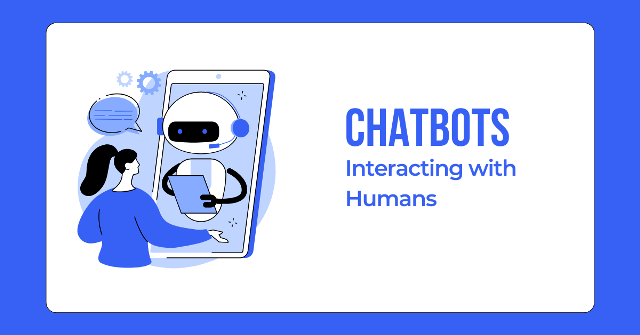The chatbot has become a customer initiation partner for different companies. Over decades of developing this model the companies have integrated their lines of business into almost all the processes and have also added more processes to benefit from AI-powered interaction channels in customer support.
Table of Contents
- Chatbot and Its Working
- Rule-Based vs AI-Powered Chatbots Getting to the Point
- Are Chatbots the Future of Customer Talk?
- Business Benefits of Chatbots: Maximizing ROI & Growth
- Benefits of Chatbots
- How to Build an AI Chatbot Without Coding
- Advanced Chatbot Strategies to Boost Engagement & Sales
- Turning Conversations into Sales: The Smart Chatbot Approach
- Major Features of a High-Performing AI Chatbot
- How to Successfully Implement AI Chatbots in Your Business
- AI Chatbots & Privacy: Guaranteeing Secure and Trustworthy Conversations
- FAQ’s
- Conclusion
Chatbots provide real-time communication, answer questions and help people purchase products. Therefore, there is a rising demand for virtual chat helpers. Companies use these bots to address the support, sales and engagement functions. From AI-powered assistants to voice-powered bots, they are making talks quicker and convenient. To prepare for 2025, chatbots will also enhance their understandability using NLU and deep learning algorithms to optimize the interaction.
Chatbot and Its Working
Chatbots are programs that simulate human-to-human conversation. They interact either by voice or text, assisting users in interrogating and completing tasks. These bots use language model processing to understand requests and provide the right responses.
A chatbot works using predefined rules and machine learning programs that adapt over time. Simple bots follow fixed scripts while advanced ones use intent recognition and context-aware responses to handle complex queries. Most contemporary bots employ speech recognition and text-to-speech synthesis so they sound more natural.
Now we have Gemini, Copilot, ChatGPT and Deep Seek.
Rule-Based vs AI-Powered Chatbots Getting to the Point
There are two primary categories of chatbots: rule-based bots and AI assistants. Rule-based chat helpers follow set rules and provide pre-written responses. They work well for basic tasks but struggle with complex conversations.
On the other hand AI-driven conversations use deep learning chatbots to understand and learn from interactions. These bots improve over time providing human-like responses. They use sentiment analysis and user intent detection to personalize conversations. Companies like the idea of AI assistants for the dynamic and interactive experiences they provide.
Are Chatbots the Future of Customer Talk?
The rise of AI-driven interactions is transforming how companies interact. Organizations today make use of intelligent virtual assistants for advertising sales as well as customer service. The bots offer automated customer care ensuring shorter response times and enhanced efficiency.
Chatbots are advancing with multilingual algorithms that make businesses capable of catering to international customers. With named entity recognition (NER) they can understand specific user details making conversations more relevant. The future of conversational AI lies in making interactions seamless, natural and effective.
Business Benefits of Chatbots: Maximizing ROI & Growth
Using a customer support bot helps businesses save time and money. These robots process several queries simultaneously minimizing the requirement for human agents. Businesses that employ AI-powered conversations experience increased engagement and improved customer satisfaction.
Chatbots boost revenue by improving sales and lead generation.
Benefits of Chatbots
| Benefits of Chatbots | Impact |
| 24/7 online customer service | Always available for customer queries |
| Cost Savings | Reduces hiring costs for support teams |
| Faster Response Time | Provides instant replies to common questions |
| Lead Generation | Captures potential customers and nurtures them |
| Improved Customer Engagement | Enhances user experience with interactive chats |
How to Build an AI Chatbot Without Coding
Creating a machine learning chatbot is now easier with no-code platforms. Platforms such as ManyChat, Chatfuel and Dialog flow enable companies to create bots without coding. Such platforms provide speech recognition, drag-and-drop tools and templates.
To construct a chatbot first establish its purpose. Choose a NLP chat assistant that fits your needs. Train it using intent recognition so it understands user queries. Finally integrate it with apps like WhatsApp, Facebook Messenger or a website.
Advanced Chatbot Strategies to Boost Engagement & Sales
A good chat assistant doesn’t only just answer questions. It also engages users and drives sales. Businesses use AI-powered assistants to send personalized messages, recommend products and re-engage inactive customers.
A deep learning bot improves over time making conversations smarter. Using conversational flow businesses can create interactive experiences. Offering limited time discounts through chatbots also helps increase conversions.
Turning Conversations into Sales: The Smart Chatbot Approach
A customer service robot can convert casual chats into sales. Using AI interactions businesses are assisting the consumer’s journey during the buying process. The chatbot may suggest products in tune with the users preferences while also providing personalized discounts.
Adding human responses makes the process smoother. Customers are convinced that they are communicating with a live assistant having faith in the process. Businesses that implement chatbots in e-commerce attribute higher conversion and better engagement.
Major Features of a High-Performing AI Chatbot
An advanced NLP chatbot involves some aspects which facilitate a rich user experience. These include:
- Speech recognition for voice commands
- Context-aware responses for personalized conversations
- Real-time interaction for faster support
- Text-to-speech synthesis for lifelike communication
- Named entity recognition (NER) to understand user-specific details
How to Successfully Implement AI Chatbots in Your Business
To deploy a virtual chat assistant, businesses must choose the right platform. Integration with existing systems is essential. Companies should train the bot using natural language understanding (NLU) and test responses for accuracy.
Monitoring chatbot performance helps improve responses over time. Using sentiment analysis businesses can track user satisfaction. These bots require constant upgrading to handle new queries and increase accuracy.
AI Chatbots & Privacy: Guaranteeing Secure and Trustworthy Conversations
Privacy has been the major concern in the deployment of AI Chat helpers within an organization. Data protection as well as statutory compliance such as GDPR comes into place here. Encryption and secure servers help protect user information.
A trustworthy AI-powered assistant should be transparent about data collection. Using user intent detection companies can customize privacy settings. Users should always be in control over their data and conversational interactions.
FAQ’s
How do chatbots understand user intent?
They use intent recognition and user intent detection to analyze queries.
Are AI chatbots better than human agents?
They provide faster responses but work best alongside human support.
Can chatbots handle multiple languages?
Indubitably a multilingual chatbot can assist customers in many different languages.
What is the best industry that would benefit from chatbots?
Industries like e-commerce, healthcare, finance and customer service derive maximum gains.
How can businesses measure chatbot success?
Tracking engagement, response accuracy and customer satisfaction rates helps measure success.
Conclusion
The future of AI-driven conversations looks promising. Deep learning chatbots will continue evolving making interactions more human-like. With advances in language model processing, these bots will handle complex requests with ease. Businesses should stay updated with the latest trends in chatbot technology. By acquiring intelligent virtual assistants now companies will have a competitive advantage in 2025 and beyond. Enterprises that adapt to conversational AI will enjoy higher customer satisfaction, better engagement and improved sales.



